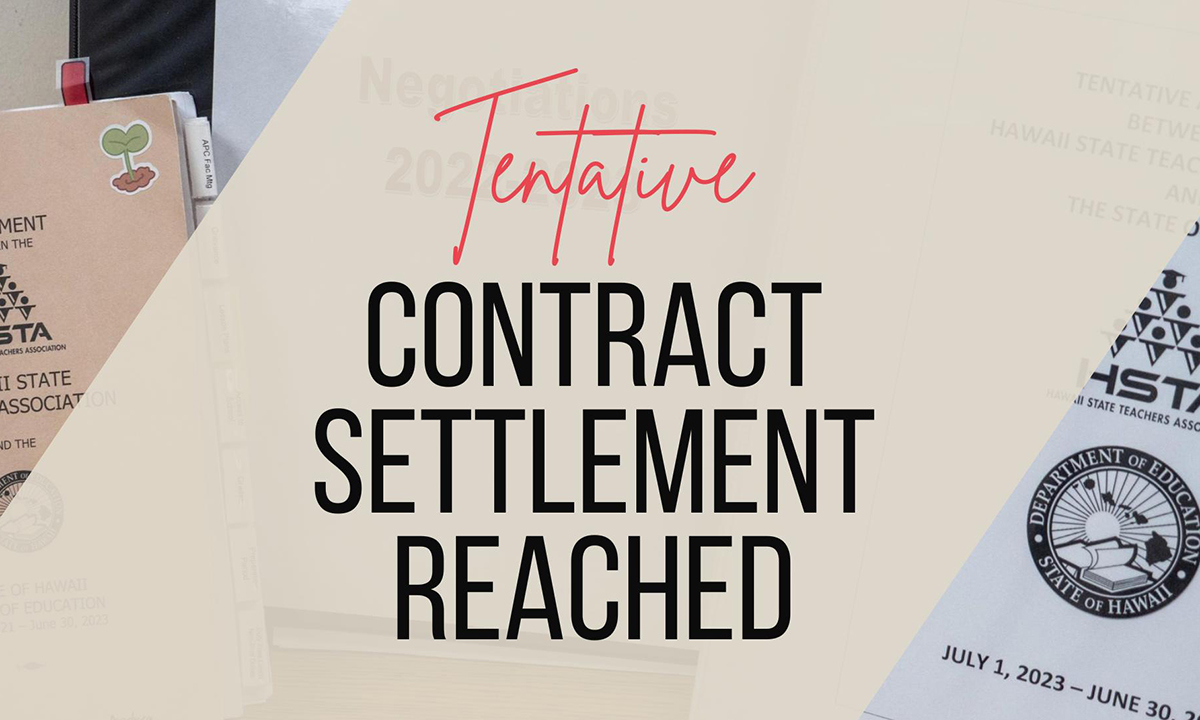Some Unusual Twists as Hawaii Teachers Union Reaches Tentative Deal with State
The union not only posted the entire agreement publicly before the ratification vote, but provided its rationale for each provision.

Get stories like this delivered straight to your inbox. Sign up for The 74 Newsletter
The Hawaii State Teachers Association announced last week that it has reached a tentative agreement on a new four-year deal for 13,700 K-12 teachers. Hawaii is the only place where the union negotiates a single contract with the state. There were some uncommon aspects to the agreement and its rollout.
The district originally offered a two-year contract with raises of 3% each year, but the agreement is for four years, with across-the-board raises of 2%, 3%, 0% and 3.5%. There are additional bonuses and salary schedule restructuring that, according to the union, brings the total raises to 14.5% over the four-year life of the contract.
This is quite a bit less than other areas of the country are seeing. United Teachers Los Angeles, for example, is demanding 20% over two years, and L.A. teachers already make more than those in Hawaii.
This has led to some grumbling from the rank-and-file on the Hawaii union’s Facebook page. “Teacher’s Unions across the nation were able to get their members 10%+ raises and yearly raises after, and HSTA comes to us with a 3.625% raise?! It’s laughable at best,” wrote one commenter.
Teachers unions and school districts often have different interpretations of how much money is available for salary increases and other spending. In this case, the union appears to accept the state’s forecast of reduced future revenues.
“We had asked for significantly larger raises but understand that the state has less money to pay for numerous key priorities in addition to addressing teacher compensation, such as creating affordable housing, bringing down the state’s high cost of living and preserving our natural resources,” said President Osa Tui Jr.
Even more unusual was the union’s willingness to not only post the entire agreement publicly before the ratification vote, but also provide its rationale for each provision the new deal contains.
This is commendable. Sharing full information before any ratification votes might not affect the content of collective bargaining agreements, but the public deserves to know as soon as possible what is being agreed to in its name.
The overall tone of the union’s communications with members about the contract is defensive, and we can expect some significant pushback from teachers about the size of the raises. Whether this sporadic muttering coalesces into a rejection of the contract when the ratification vote is held April 26 remains to be seen.
Members tend to give their unions the benefit of the doubt when it comes to tentative agreements and accept raises already in hand over the uncertainty of returning to the bargaining table. But Hawaii teachers have gone on strike twice in the past and come close on other occasions. When they do walk out, they don’t kid around: The 1973 strike lasted for 18 days, and the 2001 strike ended after 21 days.
Upsurges in teachers union militancy grab headlines and lead to speculation about it spreading elsewhere. Perhaps Hawaii can stand as an example of cordial negotiations leading to a reasonable and transparent settlement that everyone, including the public, can live with. We’ll know for sure after next week’s vote.
Mike Antonucci’s Union Report appears most Wednesdays; see the full archive.
Get stories like these delivered straight to your inbox. Sign up for The 74 Newsletter

;)